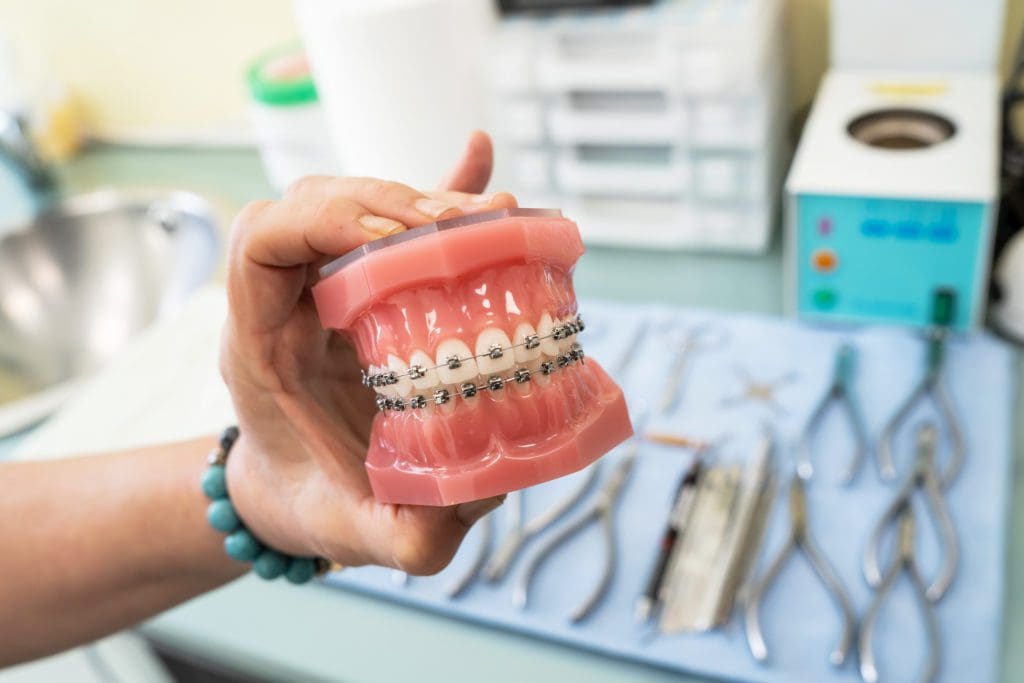Why Cumming Invisalign is the Perfect Option for a Discreet Orthodontic Service
Why Cumming Invisalign is the Perfect Option for a Discreet Orthodontic Service
Blog Article
Comprehensive Guide to Orthodontics Procedures for Remedying Dental Imbalances
Recognizing the ins and outs of each procedure, including their devices, benefits, and possible disadvantages, is vital in making notified decisions about one's orthodontic treatment. As we browse through the comprehensive guide to orthodontic treatments for dealing with dental misalignments, the intricate information of each approach will unravel, shedding light on the course towards a practical and unified dental alignment.
Orthodontic Procedures Review

Along with clear aligners and traditional dental braces, orthodontists might additionally suggest various other treatments like headgear, palatal expanders, or retainers to attend to certain positioning issues (cumming invisalign). These procedures are tailored to every patient's one-of-a-kind needs and may entail a mix of treatments to accomplish the desired outcomes. Regular modifications and monitoring are vital components of orthodontic therapy to ensure development gets on track and to make any required alterations along the method. By undergoing orthodontic procedures, patients can not just accomplish a straighter grin yet also improve their general dental wellness and feature.
Traditional Dental Braces: Exactly How They Function
When considering orthodontic treatments for dental imbalances, standard dental braces stand out as a time-tested technique for dealing with teeth positioning. Conventional dental braces consist of brackets, cords, and bands that function together to apply constant stress on the teeth, progressively relocating them into the desired placement.
As stress is used to the teeth through the dental braces, the bone surrounding the teeth is reshaped to support the brand-new tooth placements. Clients will need normal modifications at the orthodontist's office to make sure the dental braces continue to apply the correct stress for efficient teeth motion.
Undetectable Aligners: Pros and Cons
Unseen aligners provide a very discreet and hassle-free option to traditional dental braces for correcting oral misalignments. These clear, tailor-made trays are basically unnoticeable when put on, making them an attractive choice for individuals seeking a much more cosmetically pleasing orthodontic treatment. Among the primary benefits of undetectable aligners is their removability, enabling for easier maintenance of dental health contrasted to typical dental braces. Individuals can remove the aligners before consuming or brushing their teeth, lowering the threat of food obtaining embeded the home appliance and simplifying the cleaning process.

Surgical Orthodontic Options
Surgical interventions in orthodontics existing practical options for dealing with complex oral misalignments that might not be properly dealt with via conventional orthodontic treatments. While typical braces and invisible aligners can deal with lots of orthodontic concerns, specific instances require medical treatment to attain ideal outcomes. Surgical orthodontic alternatives are normally advised for severe malocclusions, significant jaw disparities, and instances where the underlying see bone framework requires modification to accomplish proper placement.
One typical medical orthodontic procedure is orthognathic surgical treatment, which includes rearranging the jaws to fix useful problems such as trouble chewing or talking. This surgical treatment is usually performed in cooperation with an orthodontist that aids line up the teeth before and after the procedure. Surgical orthodontics may also include procedures to expose influenced teeth, get rid of excess periodontal tissue, or reshape the jawbone to produce a much more harmonious face profile.
Before considering surgical orthodontic choices, individuals undertake an extensive evaluation to establish the requirement and potential advantages of such treatments. cumming orthodontics. While surgical procedure might appear daunting, it can considerably enhance both the feature and visual appeals of the smile in instances where conventional orthodontic treatments drop short
Retainers and Post-Treatment Care

Post-treatment treatment entails complying with the orthodontist's directions faithfully. This may include appropriate dental hygiene practices, attending follow-up visits, and wearing the retainers as recommended. Failing to adhere to post-treatment care directions can lead to regression, where the teeth slowly relocate back towards their original positions. Consistent retainer wear, great oral health, and normal oral exams are crucial for keeping the outcomes achieved through orthodontic surgery and making certain the long-term stability of the fixed dental positioning.
Final Thought
In final thought, orthodontic treatments offer numerous options for remedying dental misalignments. Standard dental braces utilize steel brackets and cords to move teeth into appropriate placement. Undetectable aligners supply an even more very discreet option but might not appropriate for all situations. Surgical orthodontic options are offered for more severe misalignments. Retainers are generally utilized post-treatment to preserve the brand-new alignment. On the whole, orthodontic procedures can successfully enhance oral health and wellness and visual look.
As we navigate via the thorough guide to orthodontic treatments for fixing oral imbalances, the detailed information of each method will certainly unravel, losing light on he has a good point the path towards a practical and unified oral alignment. - orthodontist
One of the most usual orthodontic treatments is the use of dental braces, which consist of steel braces and wires that apply mild stress to progressively change teeth right into the preferred placement.When thinking about orthodontic treatments for oral misalignments, conventional braces stand out as a time-tested technique for remedying teeth positioning. Furthermore, undetectable aligners may not be appropriate for complex orthodontic problems that need more substantial teeth activity, as they are typically suggested for moderate to modest instances. Retainers are custom-made orthodontic tools developed to hold teeth in their remedied positions after the conclusion of orthodontic therapy.
Report this page